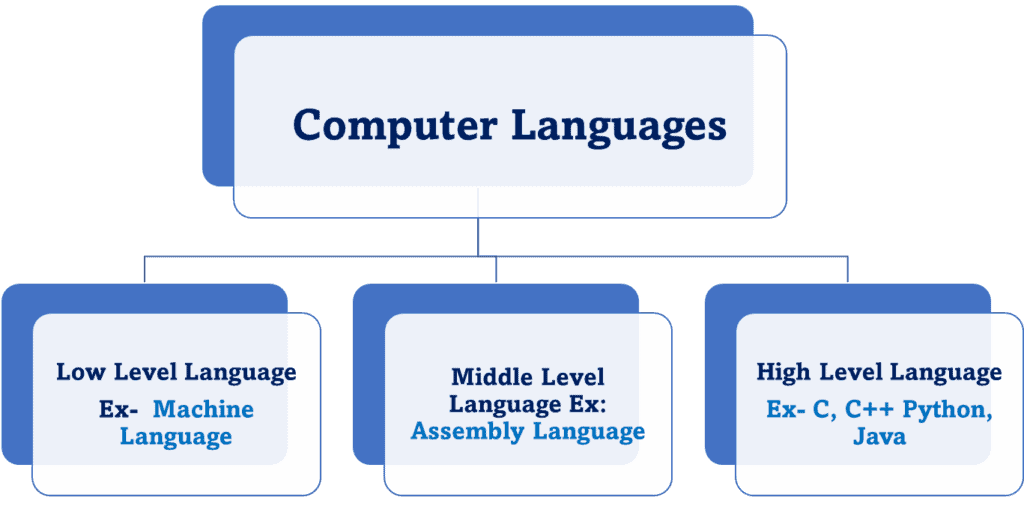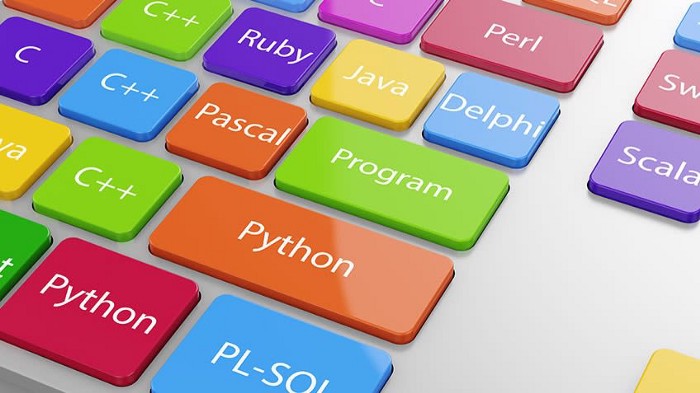2. Computer Languages
- A language that is acceptable to a computer system is called a computer language or programming language and the process of creating a sequence of instructions in such a language is called programming or coding.
- A program is a set of instructions, written to perform a specific task by the computer.
- A set of large programs is called software.
- Just as human language has its own grammatical rules; every computer language is also bounded by rules known as syntax of that language.
What is a Program?
A Program is an application or software, is a set of computer understandable instruction to solve computational problem that process input, manipulate data, and output a result. The process of writing a program is called Programming.
Example: Microsoft Word is a word processing application that allows users to create and write documents.
Computer languages are broadly classified as:
- Low-level programming language
- Middle-level programming language
- High-level programming language

a. Low Level Language:
The term low level highlights the fact that it is closer to a language which the machine understands. The low level languages are classified as:
Machine Language:
This is the language (in the form of 0’s and 1’s, called binary numbers) understood directly by the computer. It is machine dependent. It is difficult to learn and even more difficult to write programs.
b. Middle Level Language:
Assembly Language:
This is the language where the machine codes comprising of 0’sand 1’s are substituted by symbolic codes (called mnemonics) to improve their understanding. It is the first step to improve programming structure. Assembly language programming is simpler and less time consuming than machine level programming, it is easier to locate and correct errors in assembly language than in machine language programs. It is also machine dependent. Programmers must have knowledge of the machine on which the program will run.
c. High Level Language:
Low level language requires extensive knowledge of the hardware since it is machine dependent. To overcome this limitation, high level language has been evolved which uses normal English, which is easy to understand to solve any problem. High level languages are computer independent, and programming becomes quite easy and simple.

Various high-level languages are given below:
- BASIC (Beginners All Purpose Symbolic Instruction Code): It is widely used, easy to learn general purpose language. Mainly used in microcomputers in earlier days.
- COBOL (Common Business Oriented language): A standardized language used for commercial applications.
- FORTRAN (Formula Translation): Developed for solving mathematical and scientific problems. One of the most popular languages among scientific community.
- C: Structured Programming Language used for all purpose such as scientific application, commercial application, developing games etc.
- C++: Popular object-oriented programming language, used for general purpose.
- Python: One of the most popular object-oriented programming languages for do tasks related to web design, artificial intelligence, data science, business intelligence, machine learning and many more.

Nice post